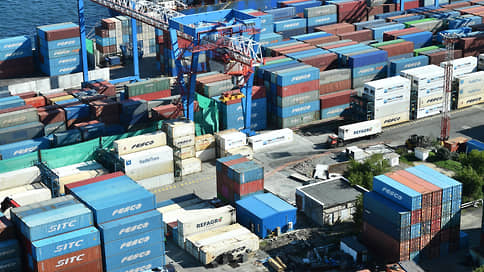Containers rushed to China
[ad_1]

Russian Railways notes a sharp increase in container traffic at the beginning of the year in the direction of the ports and border crossings of the Far East and a high demand for such shipments, which exceeds the possibility of export. The Zabaikalsk border crossing alone seeks seven times more containerized cargo than Russian Railways can deliver. Market participants confirm that both transportation and demand are growing, and believe that in order to increase cargo traffic, it is necessary to use new border crossings, increase the delivery of platforms to the east and increase the weight of the container train.
Container traffic at the Eastern range to ports in the Far East increased in January (based on the results of 24 days of the month) by 80.9%, said Alexei Shilo, Deputy Director General of Russian Railways. Three additional container trains, appointed last year in this direction and saved for the whole of 2023, also make their contribution, he noted. Mr. Shilo also drew attention to a lower base for comparison – in January 2022, Russian logistics had not yet rebuilt to the east.
Now the demand for container transportation in the direction of the Far East is very high, Mr. Shilo notes: “For example, we can transfer about 240 container trains per month to the Zabaikalsk border crossing, and the total volume of applications for this junction exceeds 1.6 thousand.” At Chinese checkpoints, demand is several times higher than the parameters agreed by the Chinese side, he emphasizes. Timber cargo — lumber, plywood, veneer, and so on — now accounts for 70% of containerized cargo at the Eastern Range. According to Aleksey Shilo, a meeting with Chinese Railways is scheduled for February, and Russian Railways will ask for an increase in the number of container trains through Zabaikalsk to ten per day. The possibility of loading the Nizhneleninskoye-Tongjiang border crossing, which was originally created for the transportation of only coal and ore, with containers and timber cargo is also being discussed.
Alexey Shilo, Deputy General Director of Russian RailwaysJanuary 26:
“Indeed, we see that a number of restrictions (by China) are being lifted, and we also see this in terms of the volume of cargo transfers.”
Market participants confirm the trend for the growth of shipments, although they estimate its pace in different ways. The Eurosib SPb-Transport Systems company says that shipments have increased by 15-20%. “China is actively coming out of pandemic restrictions, trains are being transferred more regularly, shippers are becoming more active,” they explain. “We can see a significant increase in shipments of containers in gondola cars to the west as a result of the technology proposed by Russian Railways.”
“In the period before the Chinese New Year, about a month and a half, there is traditionally a surge in cargo traffic to China,” says FESCO Strategy and Development Director Maxim Shishkov. “In the Chinese New Year itself, there is a significant slowdown in cargo traffic. Therefore, the given dynamics is natural”.
At the same time, market participants see different ways to bring real container traffic in line with demand. “One of the tools could be to increase the weight of a container train by increasing the number of wagons, controlling occupancy,” Evrosib believes. “Obvious infrastructure solutions – with an increase in capacity, selection of sections – is a very long-term topic that needs to be taken seriously. The cost of not making decisions in past years is very high, which is now being felt.”
The key task is to increase the number of coordinated applications for sending platforms in the direction of the Far East, according to TransContainer (part of Delo Group of Companies). “It is necessary to develop new routes – for example, the Nizhneleninskoye border crossing with a potential throughput capacity of one or two pairs of container trains per day,” they say. “Regular container traffic through this checkpoint will unload Zabaikalsk.” It is important to increase loaded exports from Russia through the junctions of Kazakhstan with China in exchange for empty traffic: there is a cargo base for exports to Kazakhstan and transit to China, it is required to coordinate an additional one and a half loaded container trains per day on TransContainer wagons from February 2023 with a decrease in empty shipments. The last two measures, the company says, create reserves for the passage of more than 100 container trains per month.
“Any optimization technological measures are welcome, but they do not fundamentally solve the issue of increasing freight traffic,” says Sergey Avseykov, Executive Director of the Eurasian Union of Rail Transport Participants (ESP, which unites the largest container operators). Eastern polygon. He explains that now they are allowed to take out 22 trains a day, but at least 25 are needed.
[ad_2]
Source link





